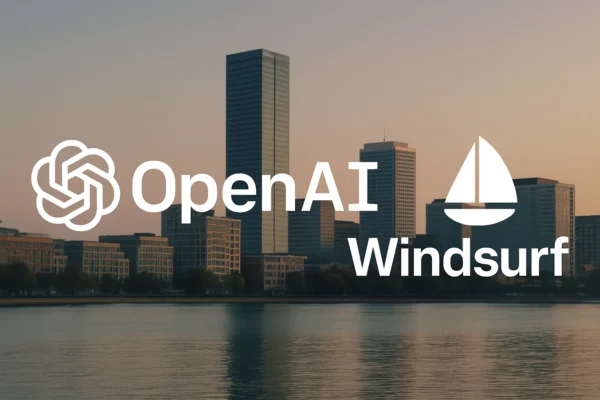
Introduction to OpenAI’s Latest Development: GPT-4.5
The AI landscape has witnessed significant developments recently. Open AI’s latest release, GPT-4.5, marks a critical juncture in the evolution of language models, demonstrating enhanced capabilities while highlighting ongoing challenges. This article deep-dives into the features of GPT-4.5, compares it with previous iterations, and explores the broader implications for the future of AI.
GPT-4.5 Key Features and Rollout
GPT-4.5 represents a substantial upgrade over its predecessors and boasts several improved features:
- Enhanced Pattern Recognition: GPT-4.5 is more adept at drawing connections and understanding context, allowing for more natural interactions.
- Reduction in Hallucinations: A notable decrease in hallucination rates improves the reliability of responses, making it a more trustworthy tool for users.
- Conversational Accuracy: GPT-4.5 aligns better with user intent, providing more accurate and meaningful interactions.
- Support for Real-time Search and File Uploads: Users can leverage real-time search functionality and upload images and files to enhance interactions.
Despite these advancements, GPT-4.5 faces limitations, such as high operational costs and a phased rollout strategy due to GPU shortages. Initially available for ChatGPT Pro subscribers and paid API users, it will be later expanded to other tiers.
Comparison with Previous Versions
To fully understand the leap that, GPT-4.5 represents, it’s essential to compare it with earlier versions of ChatGPT and OpenAI products:
- GPT-3 (2020): GPT-3 marked a significant step forward in natural language processing capabilities, offering an unprecedented level of generative text that rivaled human output. However, it suffered from hallucinations and lacked real-world experience integration. Total Parameters – 175 billion, Token Limit – 2048 tokens
- GPT-3.5 (2022): Released as an intermediate step to GPT-4, GPT-3.5 improved upon GPT-3’s capabilities but still faced challenges with context, accuracy, and hallucinations. Total Parameters –175 billion (optimized architecture), Token Limit – 4096 tokens
- GPT-4 (2023): GPT-4 introduced real-time internet search capabilities and reduced hallucinations, offering better factual accuracy. It was also more computationally efficient and adapted well to various applications, including coding and creative writing. Total Parameters – 1 Trillion+ estimated(undisclosed by OpenAI), Token Limit – 8192 tokens (for API use, longer context for special cases)
- GPT-4.5 (2025): The latest iteration, GPT-4.5, further refines pattern recognition and reduces hallucinations while maintaining computational efficiency. However, it is not designed as a reasoning model, highlighting an area for future development. Total Parameters – >1.5 Trillion with improved architecture(undisclosed by OpenAI), Token Limit – 16,384 tokens (supports extended conversations and detailed document analysis)
Limitations and Concerns
While GPT-4.5 represents significant progress, it also carries several challenges:
- Operational Costs: The high costs of running GPT-4.5 are estimated to be significantly higher than those of earlier models, which could limit accessibility and widespread adoption.
- Reasoning Capabilities: GPT-4.5 underperforms in complex reasoning tasks, such as those requiring chain-of-thought reasoning, reflecting an ongoing need for improvement in AI reasoning.
- Ethical Concerns: The potential for misuse in spreading misinformation or manipulation remains a pressing issue, necessitating robust ethical frameworks and monitoring.
- Bias and Misinformation: Despite improvements, AI models like GPT-4.5 can still propagate biases and misinformation if not properly managed.
Future Directions for OpenAI
As OpenAI continues to foray into new frontiers, several key areas are likely to influence its future direction:
- Advancements in Reasoning: OpenAI’s next goal is likely to enhance reasoning capabilities, enabling AI models to tackle more complex tasks and demonstrate a deeper understanding of context.
- Ethical Development: Addressing ethical concerns and ensuring that AI development aligns with societal values will be crucial in maintaining public trust and driving responsible innovation.
- Accessibility and Infrastructure: Managing the high operational costs of advanced AI models while expanding access to a broader audience remains an ongoing challenge.
Conclusion
GPT-4.5 represents a critical step in the evolution of OpenAI, reflecting both the potential and the challenges of advancing language models. While it offers impressive improvements, its limitations underscore the complexities of AI development and the need for ongoing innovation. As OpenAI looks towards models like GPT-5 and beyond, addressing key areas such as reasoning, ethics, and accessibility will be essential to realizing the full potential of AI technology.
(Source:OpenAI)






